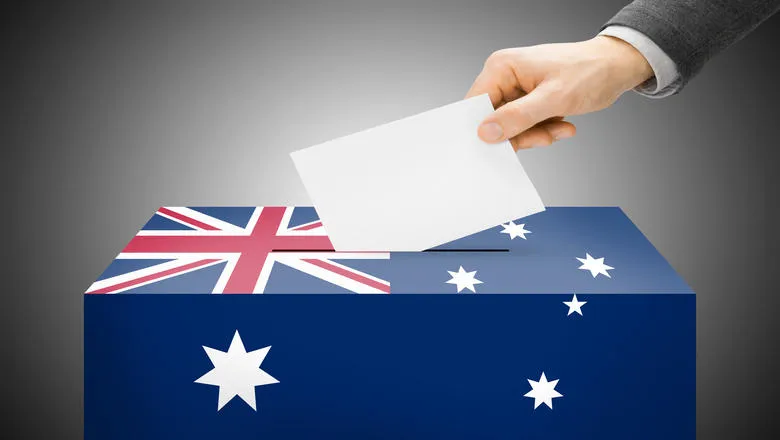20 May 2019
The Australian Labor party's detailed policy agenda may have cost it the election
Glyn Davis
GLYN DAVIS: Labor opened itself up to a relentless negative campaign by the government

For three years, through 50 consecutive national opinion polls, a Labor victory in the 2019 Australian federal election appeared inevitable. Sensing defeat, a group of experienced Liberal/National Coalition ministers announced their resignation. Prime Minister Scott Morrision, by choice if not necessity, campaigned alone. He had been in the job just six months, the last man standing after internal Coalition dissent and multiple changes of leader.
Yet election night saw swings to the government. Electorates long counted as likely Labor gains stayed with the Coalition. Labor figures looked first puzzled, then devastated. Near midnight Labor leader Bill Shorten made a short and dignified concession speech and resigned his role.
If Shorten looked stunned, so did the winners. “I have always believed in miracles,” said a beaming Prime Minister, opening his victory speech. While unclear still whether Morrison’s government will command a majority in its own right, a number of conservative-leaning independent parliamentarians ensure him sufficient numbers on the floor.
The morning after is a time for questions. What did we learn from Australia’s 46th national election? In particular, for the Institute, what does the contest say about policy strategy and choice?
Through the campaign, the government stressed continuity. A budget announced on 13 March unveiled tax cuts, a staple of election years, along with targeted infrastructure spending. The five-week campaign replayed messages of fiscal responsibility and a return to budget surplus but few elements of a third term agenda.
Instead, government attention focused on the opposition. Labor pursued a strategy of policy detail, outlining significant changes in tax policies, retirement benefits and housing, minimum wages and new investment in childcare. This opened Labor up to a relentless negative campaign by the government, which warned of tax increases and financial risk.
In recent Australian political history, only one opposition has provided such detail before a poll – the Coalition led by John Hewson in 1993. It too suffered a shattering defeat. How long before any party again offers a commitment to programmatic specificity in an election campaign?
Meanwhile, published opinion polls have been discredited. The most widely cited, Newspoll, predicted Labor would secure 51.5% of the national vote on a two-party basis. Yet it was the government which earned 51.9%. In some states the polls were wrong by nearly 10 points.
This should be of mild interest only, but political parties frame their election pitch around the traditional tools of public opinion testing. Both sides risk talking past their potential supporters, misreading the electorate. With few people owning fixed land lines or responding to mobile call requests to survey, politicians and journalists know even less about public expectations and aspirations. New forms of consultation and tracking are needed urgently.
With the decline of reliable polling comes the end of traditional campaigning. The 2019 election was often fought on social media, where provocative messages are not subject to scrutiny. Claims of Labor plans for a death tax, for example, could be circulated widely without refutation through public debate. The Coalition noted that Labor ran a similar campaign in 2016 suggesting the Liberals would dismantle the popular Medicare program.
Some familiar aspects of campaigning did endure. Newspapers owned by Rupert Murdoch were overtly hostile to Labor, leading some journalists to question the integrity of their editors. A conservative mining magnate, Clive Palmer, spent an estimated $80 million on advertising, again largely aimed against Labor. In response, activist groups such as GetUp! ran campaigns against leading Coalition figures, though often to little effect.
For the conservatives, the 2019 election marks a significant victory – a new Prime Minister now with his own mandate, offering small government and low taxation. The retirement of many senior and more liberal Coalition parliamentarians will allow Morrison to characterise his administration with generational change.
For the progressive side of politics, 2019 underlines key dilemmas. Labor scored just 34% of the primary vote. The progressive vote is now split permanently between traditional Labor and a Green Party which reliably secures 10% or more of the national vote. Australia’s preferential voting system ameliorates the effect, but the dynamic sets up bitter competition within one side of politics. In 2019 the Greens campaigned against a proposed new coal mine in Queensland and highlighted Labor’s equivocal position. The Greens’ message resonated in progressive metropolitan seats but proved electoral poison in regional Queensland, where Labor lost its traditional mining base and a string of potential gains.
So Australia’s election ends with a surprised but delighted conservative government and a dispirited opposition. A generational divide over climate change remains unresolved, despite electoral evidence that the issue is now central for many more affluent Australians. With few clues so far about its policy preferences, the returned government must address issues from tax reform to energy choices.
For Labor, after three years as the inevitable next government, defeat brings bitterness and some equally hard choices. When the Coalition lost in 1993 after offering a similar detailed policy agenda, the lesson went deep. Three years later it adopted a small, targeted approach – critiquing the then government but offering few proposals of its own. It won handsomely. Good policy and good politics, it turns out, are not necessarily the same.
Professor Glyn Davis is CEO of the Paul Ramsay Foundation, and Visiting Professor at the Policy Institute, King's College London.
